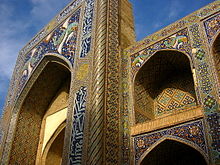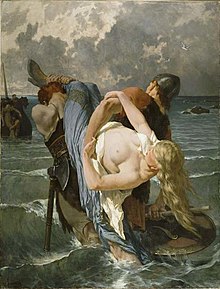| Part of a series on |
| Forced labour and slavery |
|---|
 |
You can help expand this article with text translated from the corresponding article in Swedish. (March 2024) Click [show] for important translation instructions.
|











The Bukhara slave trade refers to the historical slave trade conducted in the city of Bukhara in Central Asia (present day Uzbekistan) from antiquity until the 19th century. Bukhara and nearby Khiva were known as the major centers of slave trade in Central Asia for centuries until the Russian conquest of Central Asia in the late 19th century.
The city of Bukhara was an important trade center along the ancient Silk Road, through which slaves were traded between Europe and Asia. In the Middle Ages, Bukhara came to lie in the religious border zone between the muslim and non-muslim world, which was seen as a legitimate target of slavery by muslims, and referred to as the "Eastern Dome of Islam". It became the center of the massive slave trade of the Samanid Empire, who bought Saqaliba (European) slaves from the Kievan Rus' and sold them on to the Middle East, and as such constituted one of the main trade routes of Saqaliba slaves to the muslim world. Bukhara was also a center for the trade of non-muslim Turkish slaves from Central Asia to the Middle East and India, where they composed the main ethnicity of ghilman (military slaves) for centuries.
In the early modern age, the contemporaneous Emirate of Bukhara met competition in the slave trade with the nearby Khanate of Khiva, but continued to function as a major slave trade center for non-muslim slaves to Central Asia and the Middle East. In this time period the two main traded demographics were Christian eastern Europeans, who were acquired by a trading connection with the Crimean slave trade in the Black Sea, and Shiite Iranians, who were seen as heathens and whose slavery was therefore considered legitimate by the local Sunni authorities. The ancient Bukhara slave trade was not closed until its closure was forced upon the Emir of Bukhara by the Russians in 1873.
© MMXXIII Rich X Search. We shall prevail. All rights reserved. Rich X Search
